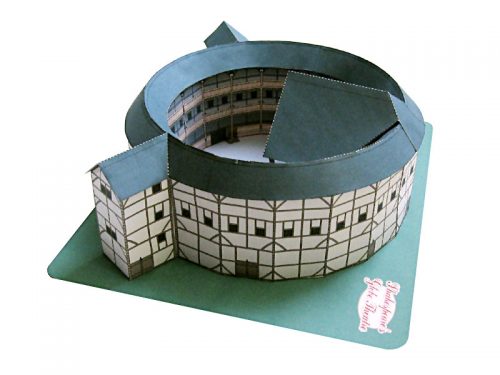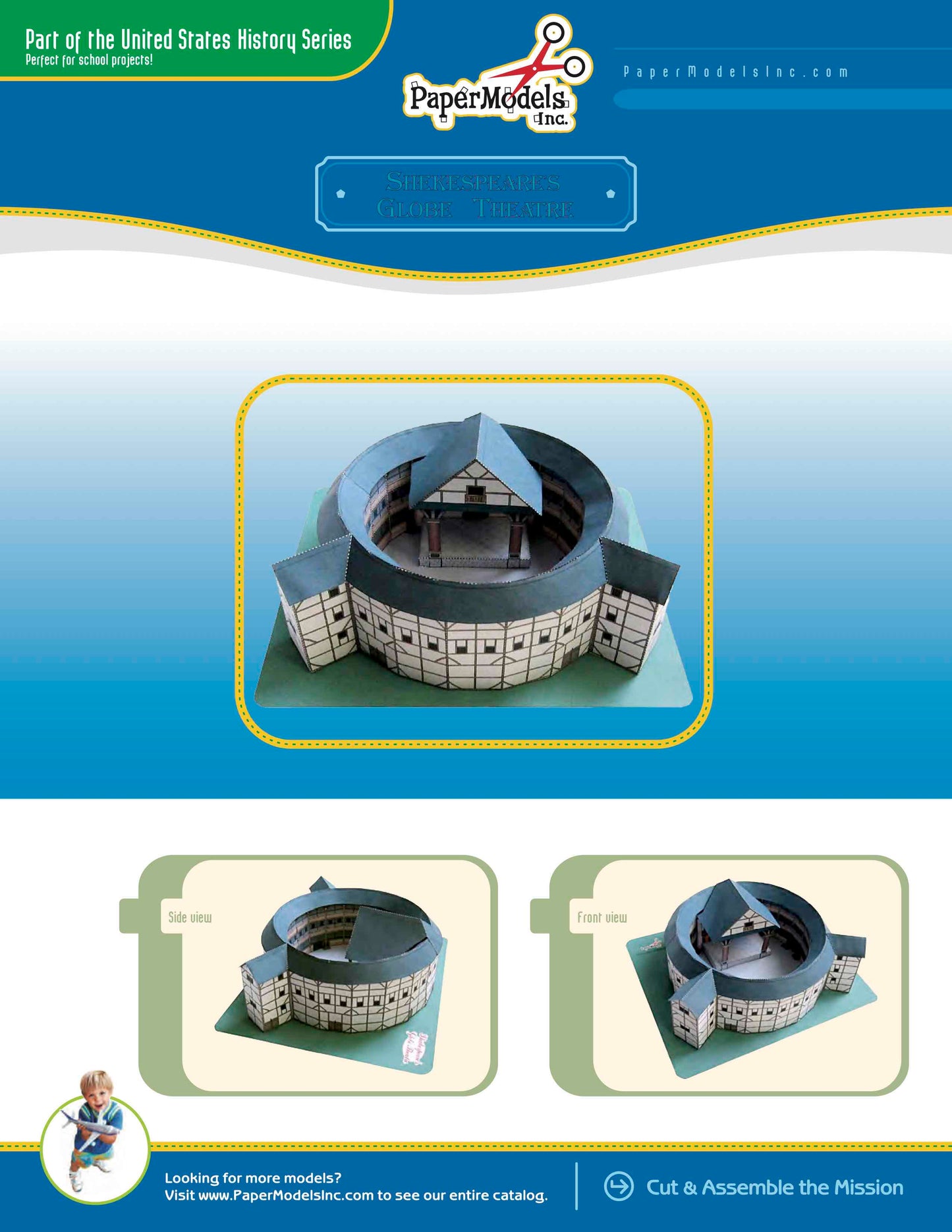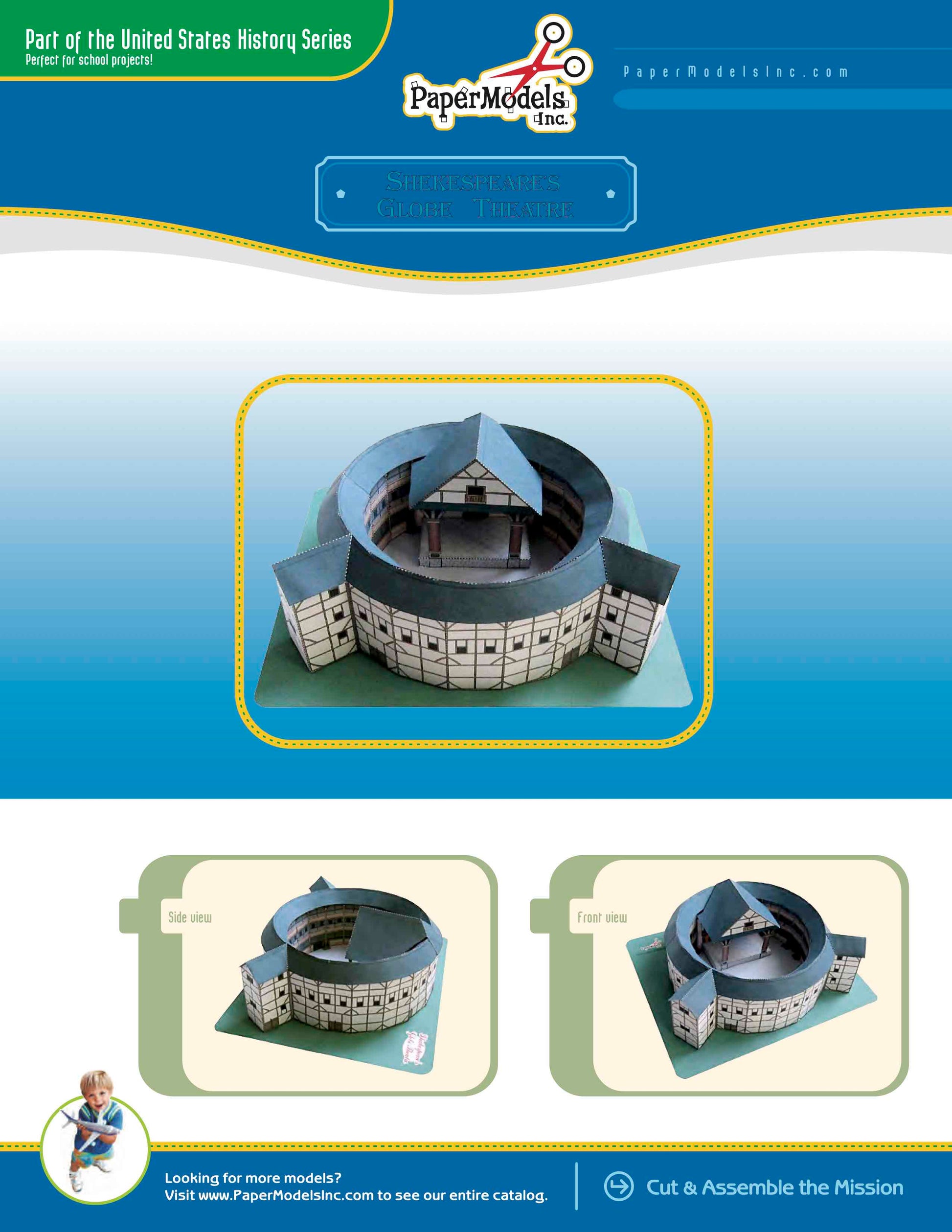Shakespeare's Old Globe Theatre - England - Paper Model Project Kit
Shakespeare's Old Globe Theatre - England - Paper Model Project Kit
Couldn't load pickup availability
🌟 Welcome to Paper Models Online – Your Shortcut to Academic Excellence! 🌟
Are you tired of stressing over last-minute school projects? Look no further! Paper Models Online is here to make your academic life a breeze.
🚀 Why Choose Us?
At Paper Models Online, we understand the pressure of looming deadlines and the desire for that coveted "A" grade. That's why we've crafted the perfect solution for you! Whether you're a student aiming for extra credit, a parent looking for quality time with your kids, or just someone in need of a break from the chaos, our paper models are your ticket to success!
💻 Instant PDF Download OR Pre-Printed & Shipped
You're in control! Choose from our instant PDF download, starting at just $9.95 for the 7"x10" size or $11.95 for the 10"x13" size.
Print it on your home or office printer using regular paper, or opt for the hassle-free pre-printed option. We'll ship it directly to your doorstep for a flat $5 fee via USPS First-Class Parcel, ensuring you get it in 1-3 days!
✂️ Easy Assembly, Maximum Impact
With just a pair of scissors, some glue, and an hour of your time, you can turn these paper sheets into stunning three-dimensional architectural replicas or complete science projects. The images on our website are real models made from our kits, and we even provide a history to help you craft an impressive report.
🎨 Unleash Your Creativity
Not into mission kits? No worries! Our models double as templates for your creative genius. Paint, trace, adjust sizes—your imagination is the only limit! Create a custom masterpiece that reflects your unique style and personality.
🛒 The Buying Process Made Simple
- Choose Your Size: 7"x10" or 10"x13"
- Choose Your Delivery: Instant PDF download or pre-printed and shipped
- Purchase Your Model: It's that easy!

📦 Typical Kit Sample
Each kit includes 8 to 18 pages, providing everything you need to bring the model to life. An "exploded view" guides you through assembly, and a complimentary history adds that extra touch for your report. Impress your teacher not just with creativity but also with your research skills!
Don't let deadlines stress you out. Choose Paper Models Online for your next school project, and let us be Your Best Way To Get An "A"! 🌟
 |
 |
 |
| Exploded View | Sample Pieces | Finished Model |
History For Your Report
The Old Globe Theatre
The Globe was an open-air theatre that seated up to 3,000 spectators. It had about twenty sides, which made it appear round. It was three stories high and had a diameter of about 100 feet.
The rectangular stage at the front of the theatre was about 43 feet wide and 28 feet deep, and it was raised a few feet off the ground so there was a crawl space underneath. There were trap doors in the floor of the stage and in the Heavens in the roof above the stage for entrances, exits, or special effects.
Around the yard and stage were three tiers of galleries. Wealthier patrons could sit in these seats, while the "groundlings" stood in the yard for a penny each. A special tiring room behind the stage provided a place for storage or costume changes. A balcony above the tiring room, behind the stage, provided an acting space, a place for the orchestra, or for more seating.
There were two doors on the left and right of the tiring area. In the middle was a large opening with a curtain, which could be drawn or opened as needed. There was no curtain hiding the entire stage. The plays were written so that the players could enter and exit the stage seen by the audience. There was no scenery and props were simple.
A flag at the top of the theatre announced plays every day since the Puritans would not allow publicity. A black flag meant a tragedy was being performed, white was a comedy, and red was history.
Patrons of the globe were transported by ferry from across the Thames. Shrewd wherrymen ["Elizabethan taxi drivers" according to the tour guide at the Globe] would withhold the price of transport until halfway across, so the passenger had to pay whatever the wherryman asked for. As theatre-goers entered the theatre, they dropped their admission into a box, (therefore we have box offices.)
The actors and the audience always interacted. This interactivity was unavoidable because of the audience's rowdy behavior particularly in the groundling areas. For instance, some people would join mock fights. The noise was tremendous. People could drink or eat without paying any attention to what happened on stage. Common refreshments were hazelnuts, beer, water, gingerbread, apples, and oranges, all of which were occasionally thrown at the actors onstage.
There are a few theories as to the creation of the Globe Theatre. In 1598, James Burbage's theatre, the Theatre, was in danger because the plot of land it was situated on was at the end of its lease. The landlord threatened to tear the theatre down. To avoid paying a high price to keep the theatre, he had his two sons, Richard and Cuthbert Burbage, dismantle the Theatre piece by piece and transport it across the Thames to a small lot on the south bank in Southwark. They renamed the "new" theatre the Globe.
There is another story that goes something like this. The Theatre was situated in the heart of London, where the theatre were subject to closures because of outbreaks of the plague and the Puritans disapproving of theatre in the city. These were detrimental to the livelihood of the theatre, so the Lord Chamberlain's Men disassembled the theatre in 1598 and moved it over to Bankside. However, the theatre did not belong to the company when they performed this feat. It had merely been leased to them. When the owner found out about this (for he was not in London at the time,) he filed a lawsuit. He lost. [I have been told by many people that this story is not true, but I read it somewhere, I wouldn't just make it up. If you want my opinion, better to rely on the first story. Or go to one of the sites on my links page and take their word for it. I don't want anyone getting in trouble because of me.
The Globe began its first season in 1599 with a production of As You Like It, and continued with works by Shakespeare, Jonson, Beaumont, Fletcher, and others. By the sharing system that theatrical companies commonly used during the 17th century, the Burbage family got half of the interest, and the other half was split between five actor-sharers: Shakespeare, Will Kempe, Thomas Pope, Augustine Phillips, and John Hemminges. These men were players of the Lord Chamberlain's Men, a popular group of the time whose home theatre was the Globe.
In 1613, during a performance of Henry VIII, a canon went off to mark the entrance of the king, and a stray spark set the thatch roof aflame. In one hour, the theatre was destroyed. No one died in the conflagration. Reconstruction of the Globe began quickly, and it was finished by June 1614. Performances continued until 1642, when the Puritans, who found theatre vulgar and intolerable, shut all theatres down in and around London. Two years later, the Globe was leveled to make way for tenement dwellings.
© Copyright – Paper Models, Inc. – All Rights Reserved
Share










